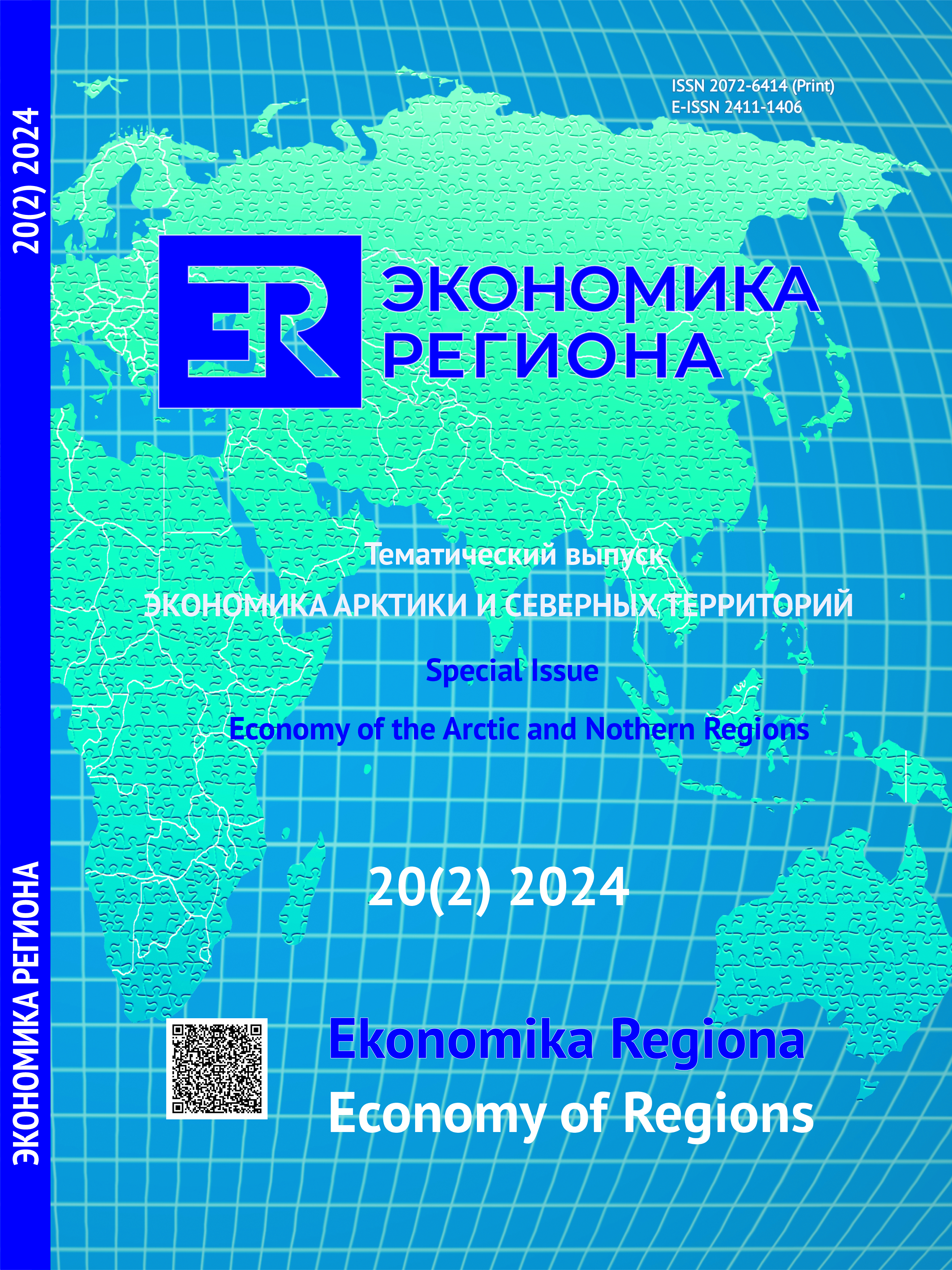The Arctic Oil and Gas Industry and Indigenous Ethnic Groups: Potential Assessment and Relation Problems
DOI:
https://doi.org/10.17059/ekon.reg.2024-2-12Keywords:
Arctic, oil and gas industry, oil and gas regions, cluster, shift method, demographic processes, subsoil users, territories of traditional environmental management, indigenous peoples of the North, contractual relationsAbstract
The oil and gas industry is the basis of Russia’s socio-economic development and remains the main source of foreign exchange earnings. In the 21st century, hydrocarbon exploration moved to Arctic regions. The study aims to assess the impact of the Arctic oil and gas industry on indigenous peoples of the North and identify ways to improve contractual relations between them. To this end, statistical, cluster, aggregation, analogy approaches, etc. were used. Analysis of the differences of oil and gas districts in economic activity, commodity specialisation, transport logistics revealed 6 clusters: Nadym-Urengoy, Purovsky, Zapolyarny, Nenets, Taimyr-Turukhansky (Vankorsk) and Usinsky. The oil and gas fields are linked to places of traditional residence and economic activity of small indigenous peoples that are rich in renewable natural resources. The development of these areas expanded the country’s oil and gas resource base. However, it also caused social and environmental problems associated with a decrease in renewable natural resource potential of places of traditional residence and economic activities as a result of pollution and reduction of fishing and hunting grounds. Simultaneously, the shift method traditionally used to overcome the shortage of qualified personnel in the Northern and Arctic regions allows oil and gas companies to avoid the cost of creating social infrastructure. Despite advances in technology and state policy measures implemented to solve social, ethnic and environmental problems of small indigenous peoples, economic benefits are the most important reason for the development of the Northern and Arctic regions. Thus, contractual relations between extractive corporations and indigenous ethnic groups do not protect peoples’ livelihoods. A comprehensive assessment of renewable natural resource potential is required to reduce the damage to indigenous peoples and the environment during hydrocarbon exploration.
Downloads
Published
How to Cite
Issue
Section
License
Copyright (c) 2024 Логинов Владимир Григорьевич

This work is licensed under a Creative Commons Attribution 4.0 International License.




